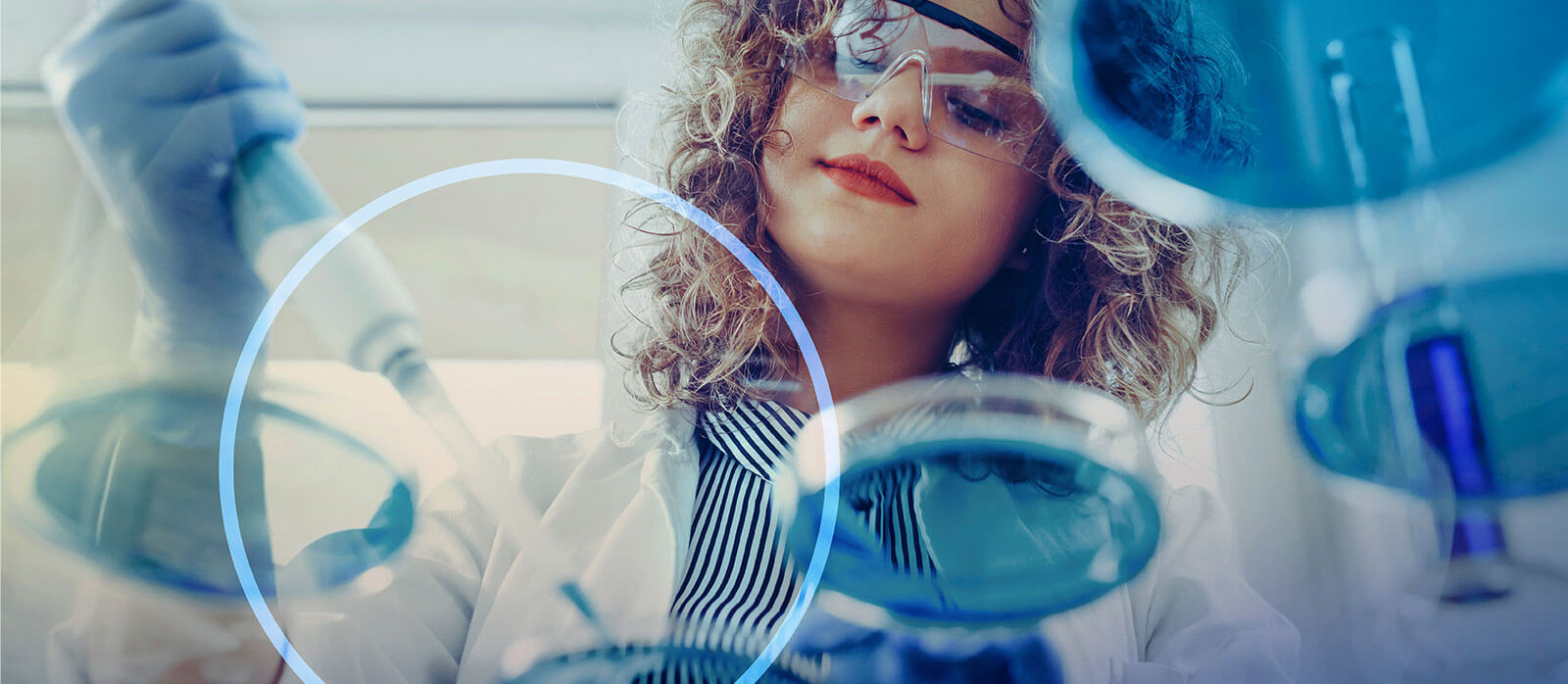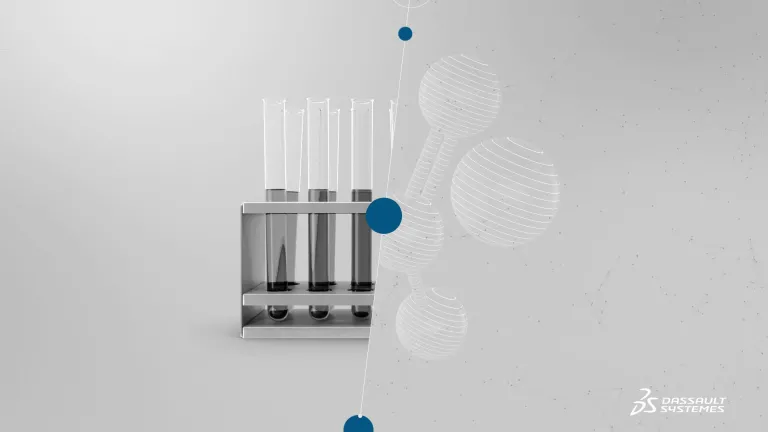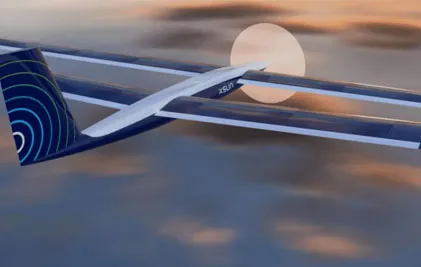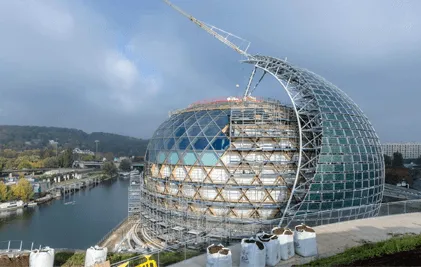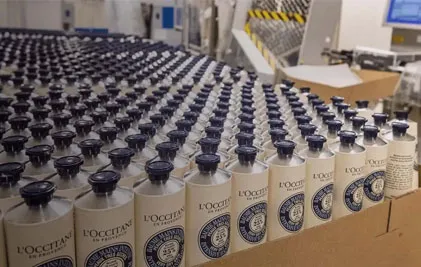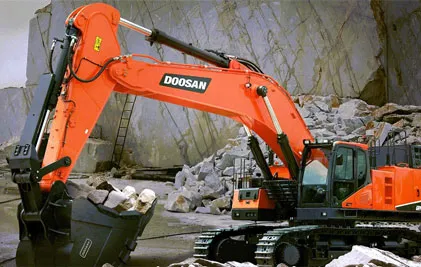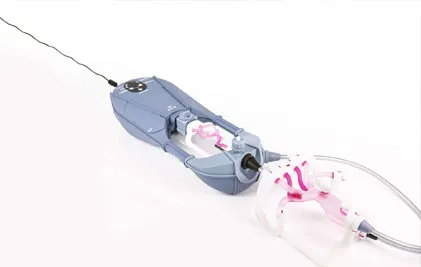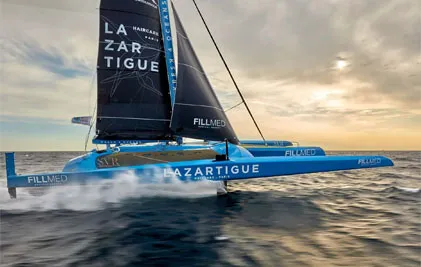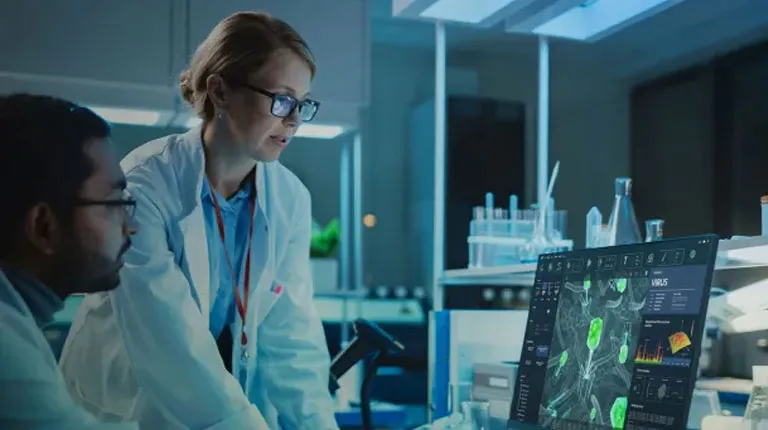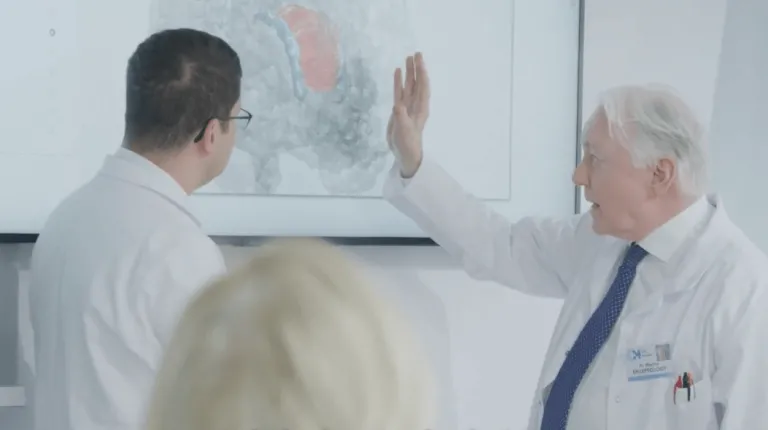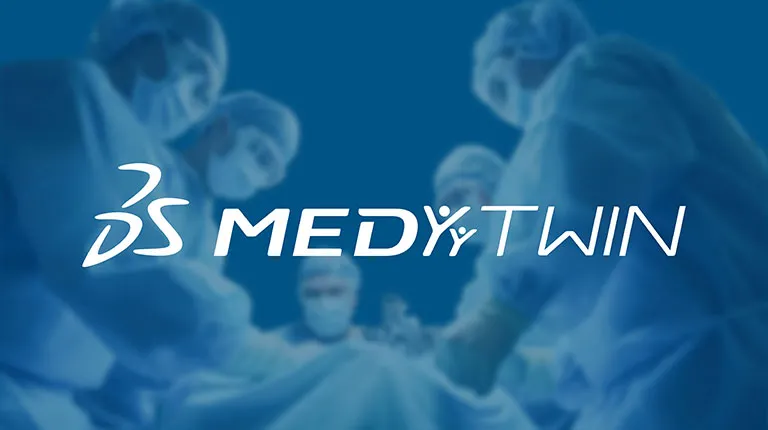We Are a Science-Based Company
Science is our DNA.
Science-Based Human Progress
To open new horizons for innovation, by fusing what is and what could be.
At Dassault Systèmes, we believe that the best way to build a better future for all is through science.
For this reason, science underlines all of our efforts to harmonize product, nature and life and to provide sustainable virtual twin experiences for businesses and people.
From the context (Until now) to the final benefit for people, we highlight how virtual worlds (From now on) can improve science practices and outcomes in engineering, material science, medicine, biology, data science and natural sciences.
The power of science is that it’s not limited, it’s inexhaustible, limited only by imagination. We help our customers practice Science for a Purpose. Putting science in action benefits entrepreneurs, employees, patients and citizens. For us, science is not only research but also finding. We strongly believe in Applied Science. Science is nothing without researchers, innovators and enthusiasts. It requires embodiment, exchanges, discussions, and debates. Science is not boring but fascinating. We foster Living Science.
At Dassault Systèmes, we believe that the best way to build a better future for all is through science. For this reason, science underscores all of our efforts to harmonize product, nature and life and provide sustainable virtual twin experiences.
Science for a Purpose
Science is our DNA.
Geometry
Can you lighten a three-dimensional structure and also maintain its resistance?
The geometry of a part is traditionally developed to respond to resistance constraints and robustness to external forces, but also for positioning and movement, in particular to ensure optimal interaction with other parts. In the industrial context, geometry is also driven by its means of manufacture.
The evolution of manufacturing options – such as 3D printing, also known as additive manufacturing – makes it possible to overcome design constraints linked to production. Freed from these production contingencies, it becomes possible to greatly lighten the geometry of the parts while maintaining their resistance and the initial functionalities. Thus, our generative design algorithms offer completely new three-dimensional optimization, organic and inspired by nature.
Physics
How can you imagine and evaluate several alternatives without impacting the real world?
In order to better understand, model and explain physical phenomena, we have developed expertise that allows you to to virtually represent and model elements based on real-world principles of geometric, relational and behavioral conformity – but also to experiment, verify and predict reactions based on a wide range of scenarios. These assessments are based on scientific models that finely describe the world around us. Exploring alternatives during the creation of complex products, infrastructures or molecules (to give just a few examples) opens the possibility of optimizing design to improve operation, reduce weight, to increase resistance or to be more sustainable without impact on the physical world, evaluating each possibility and finding compromises between several experts while integrating users.
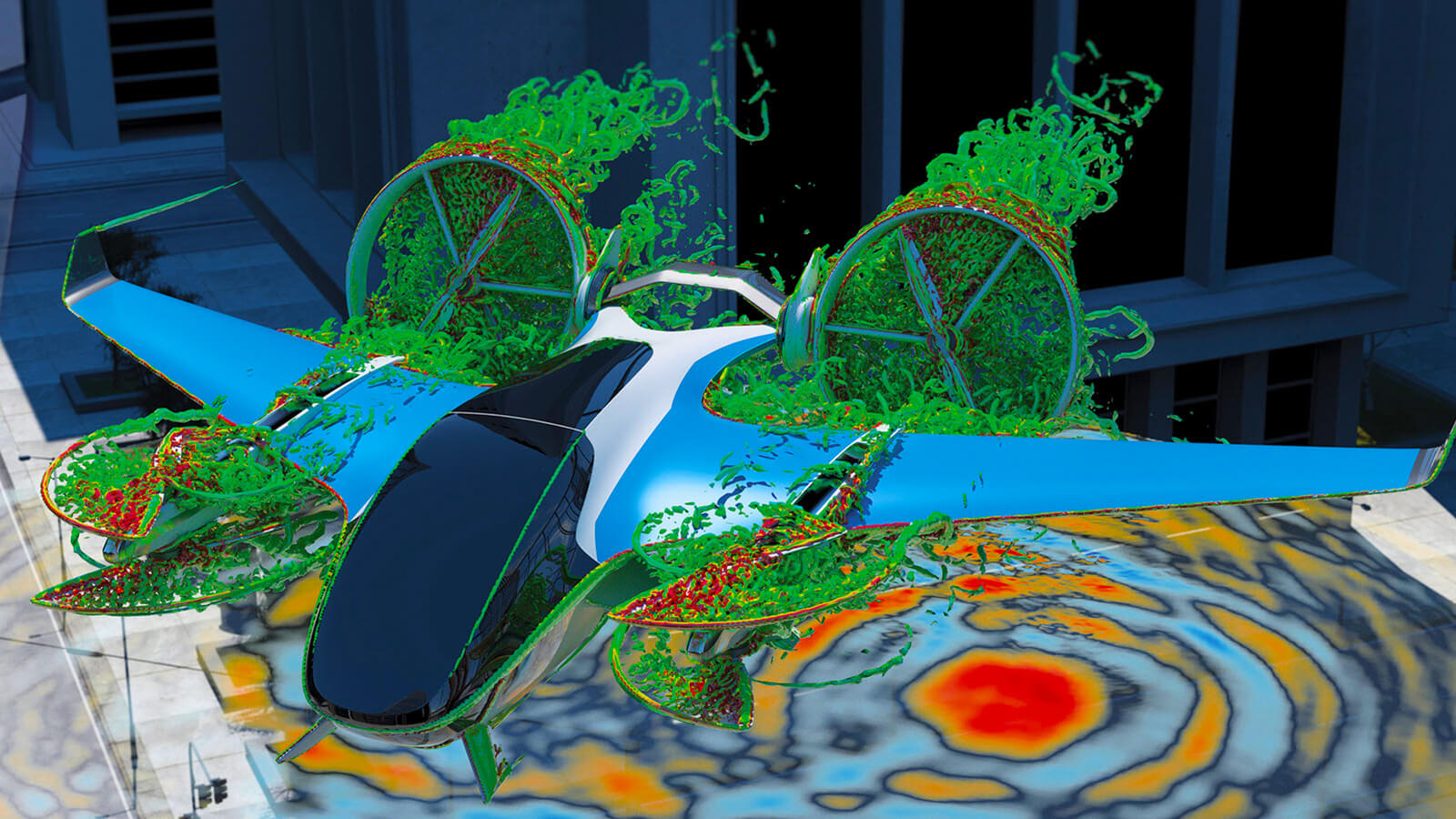 v
v
Chemistry
How can you optimize a battery’s efficiency?
With the advent of electric mobility, the battery has become a major element in the pursuit of a achieving an autonomous and robust alternative to oil. This battle for credible and reliable new sources of energy takes place at the molecular level where researchers can identify, test and produce the next-generation of high-performance batteries.
The chemical dimension determines the effectiveness of the components and formulations of a battery, the effective supply of useful energy and the safety of the device as a whole. Both the chemistry as well as all the electronic adjustment processes and the cathode – anode – electrolyte – envelope – connections interactions benefit from a virtual simulation that’s consistent with how the product would work in the real world in order to predict the concrete quality of the future battery.
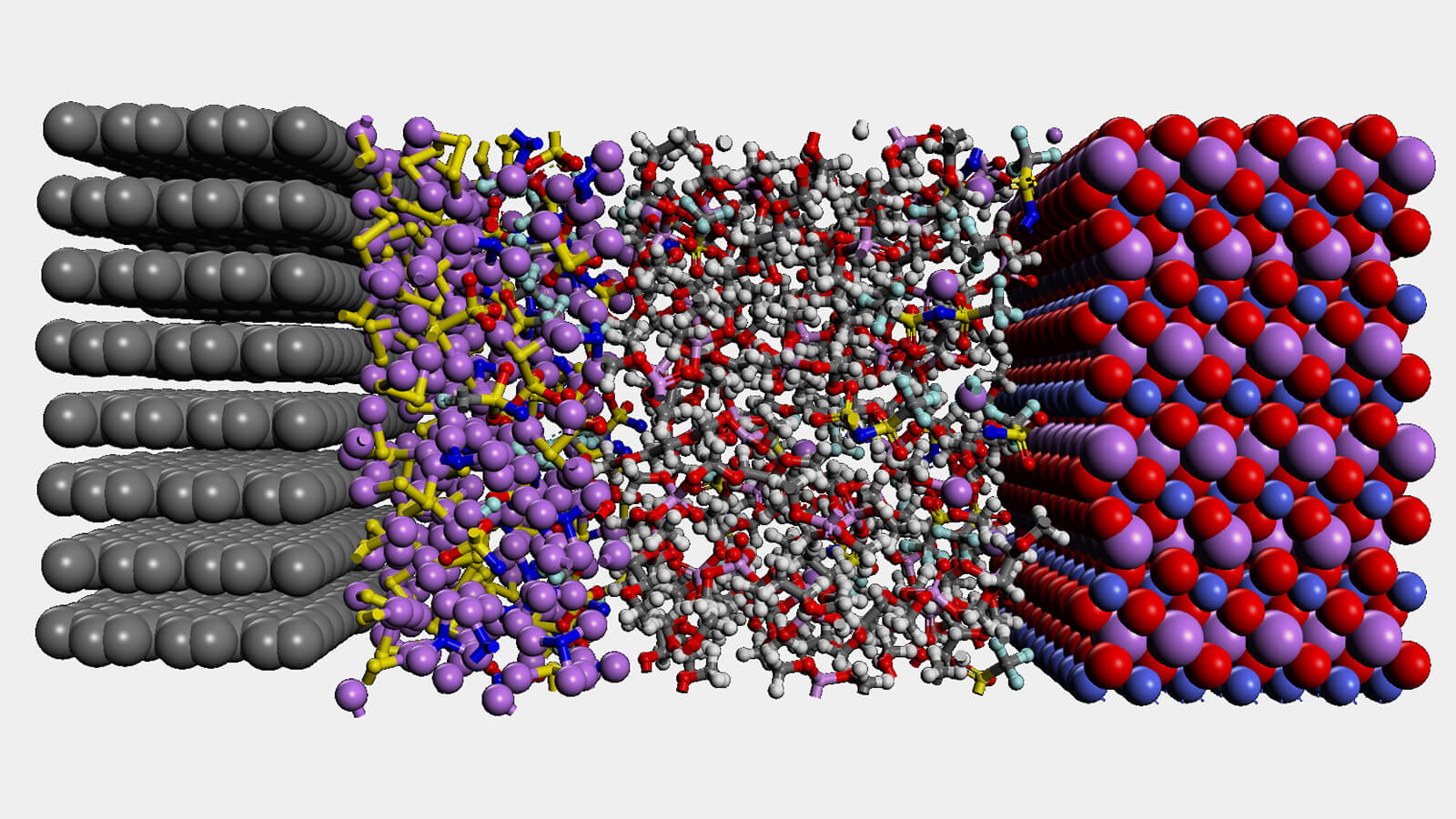
Material Science
How can you develop tailor-made materials?
Finding a material from a set of constraints used to mean testing several existing candidates and choosing the one that best responded.
With virtual molecular research, it is now possible to directly design a new material according to the identified needs and the desired atomic interactions. The result developed in silico can then be optimized to be created and actually produced to be tested and used.
Learn more on Material Science
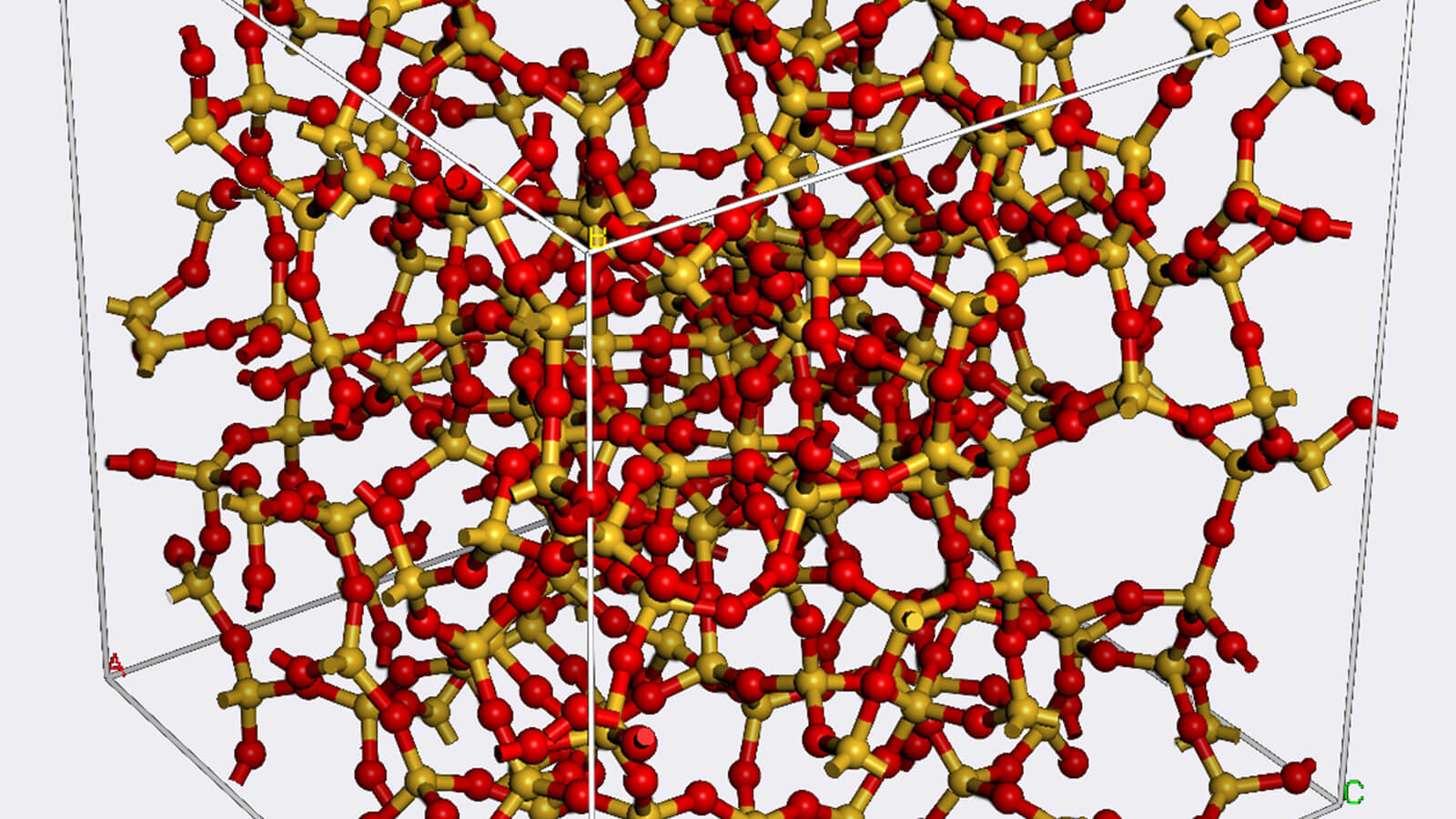
Biology
How can you understand and repair living organisms at the molecular level?
Since its origin, the study of living organisms at the molecular scale has been accompanied by the development of complex tools to identify and understand phenomena invisible to the naked eye.
Virtual laboratory technologies provide researchers with the ability to model, analyze and predict reactions on a scale that starts at infinitely small. All sequencing, gene expression, mass spectrometry and assay operations are now accessible within the same research environment.
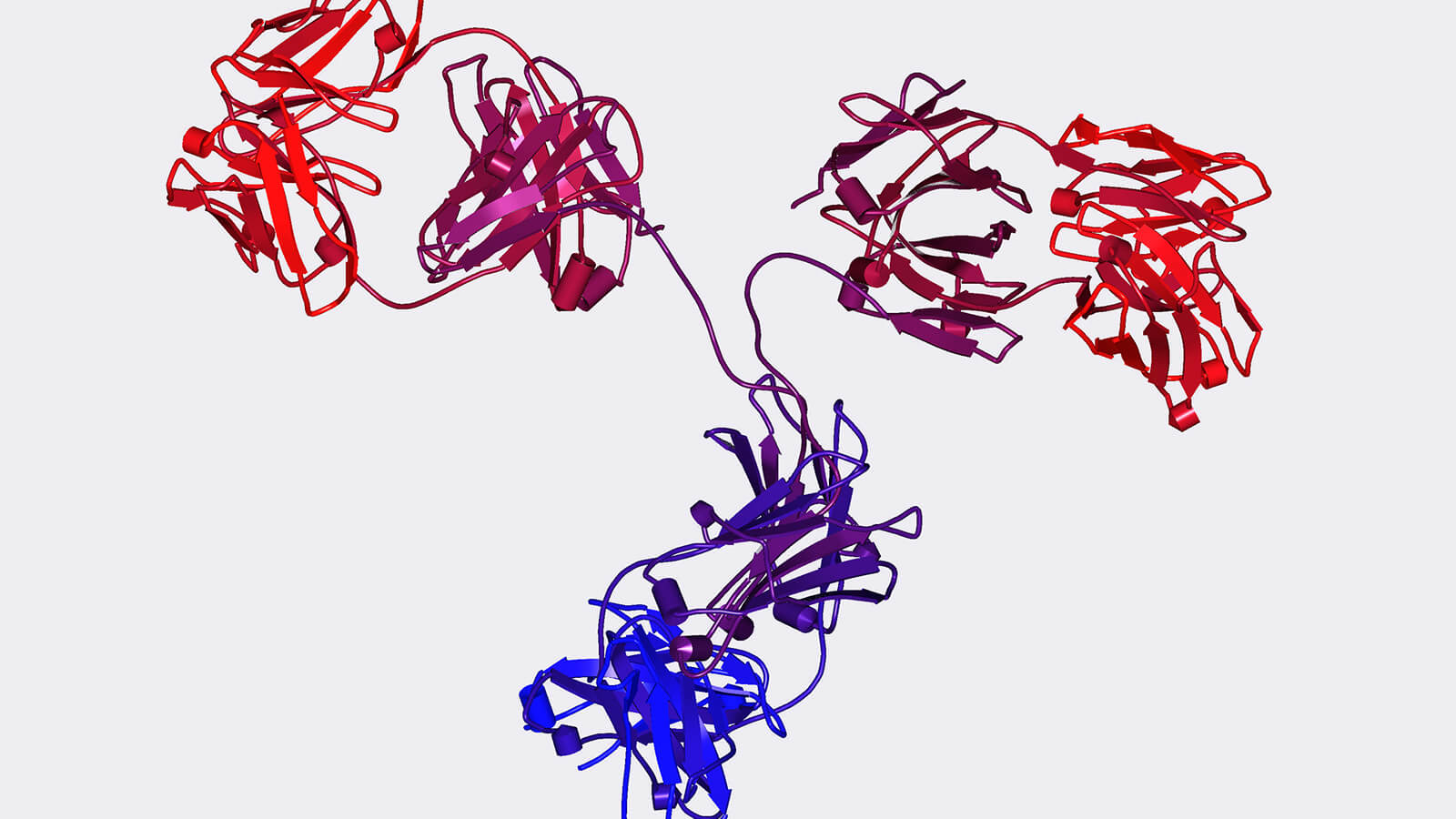
Medicine
How can we predict which surgical approach will be the best?
To ensure an optimal result with the fewest side effects, surgical and drug treatments must be adapted to each patient. This is the revolution that is precision medicine, replacing a one-size-fits-all approach to healthcare.
Imagine a surgeon digitally testing interventions until he identifies the best solution for each patient. This approach already exists thanks to Dassault Systèmes virtualization solutions, making it possible to harmonize the practices with the real situations encountered by the practitioner.
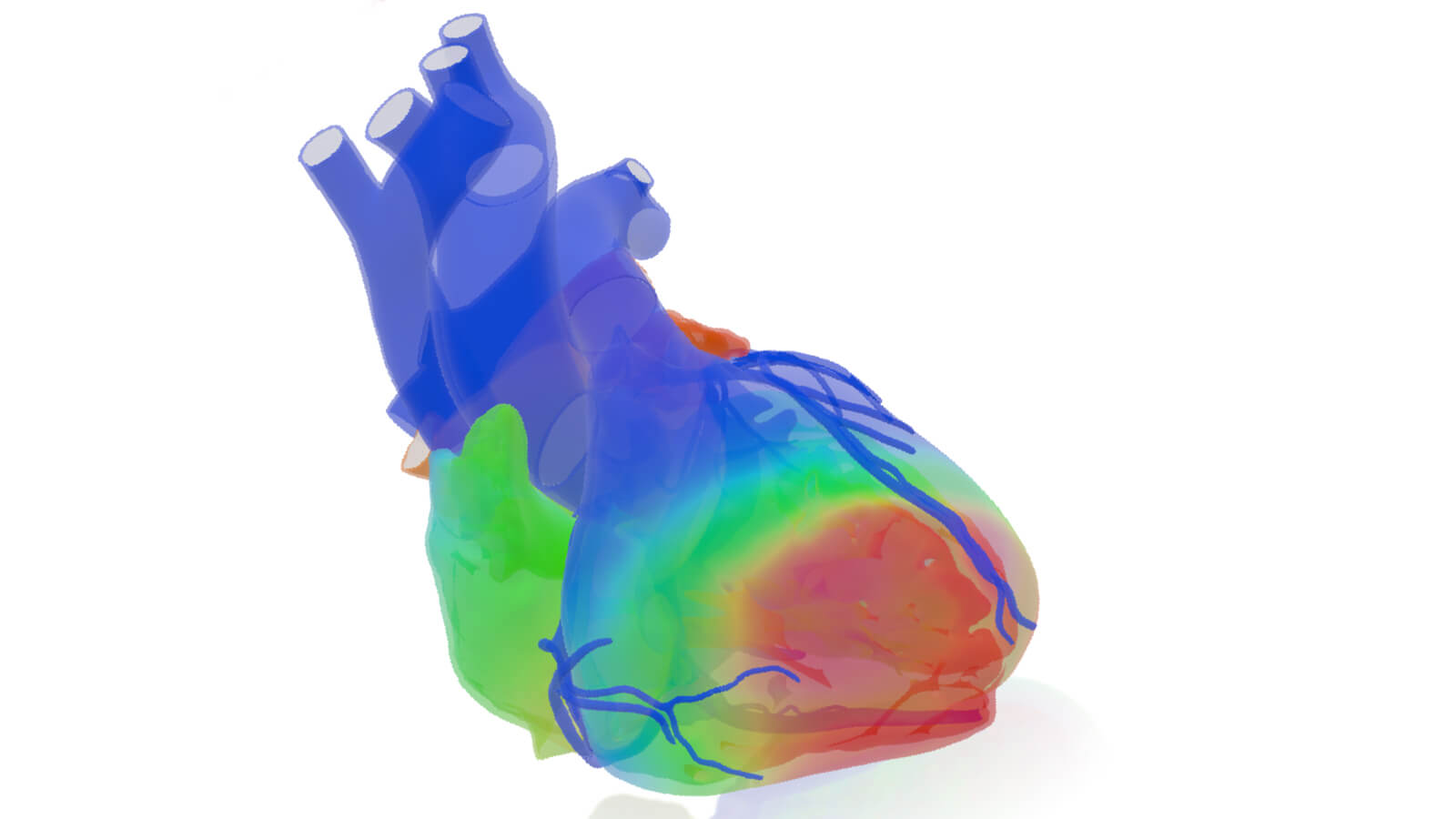
Geology
How can we maximize resource potential without degrading the environment?
The extraction of materials from soil remains essential to allow humans to communicate, to move around and more broadly to ensure a decent quality of life around the world. Understanding the structure and components of subsoil has become crucial to avoid damaging soil and groundwater during the extraction process.
While extraction remains mandatory, virtualization offers a more environmentally-friendly approach. Extraction sites are considered within geographical context. Operations are planned and optimized in real time to minimize their impact. Resources are clearly identified and estimated in order to avoid unnecessary or excessive interference with the soil.
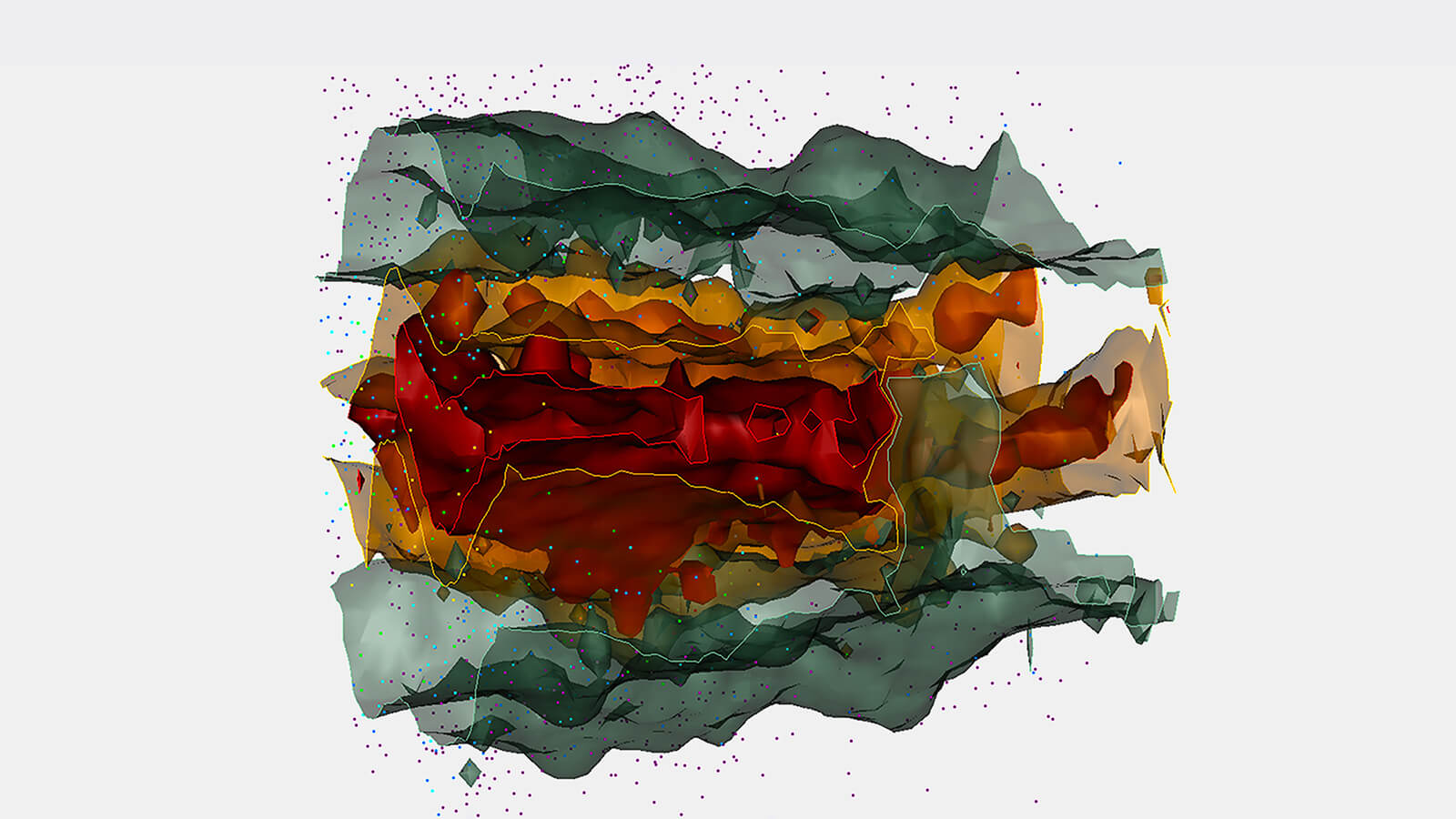
Data Sciences
How can we develop therapies tailored to each patient?
Developing a medical treatment is costly and fraught with pitfalls. When taking into consideration the specificities of each type of patient to identify the optimal approach, the complexity can become unthinkable.
Using proven clinical data and embedded artificial intelligence technology, our unified virtual platform brings together real-time performance metrics, predictive models and foresight capabilities to develop a patient-centric approach and trials decisive clinics.
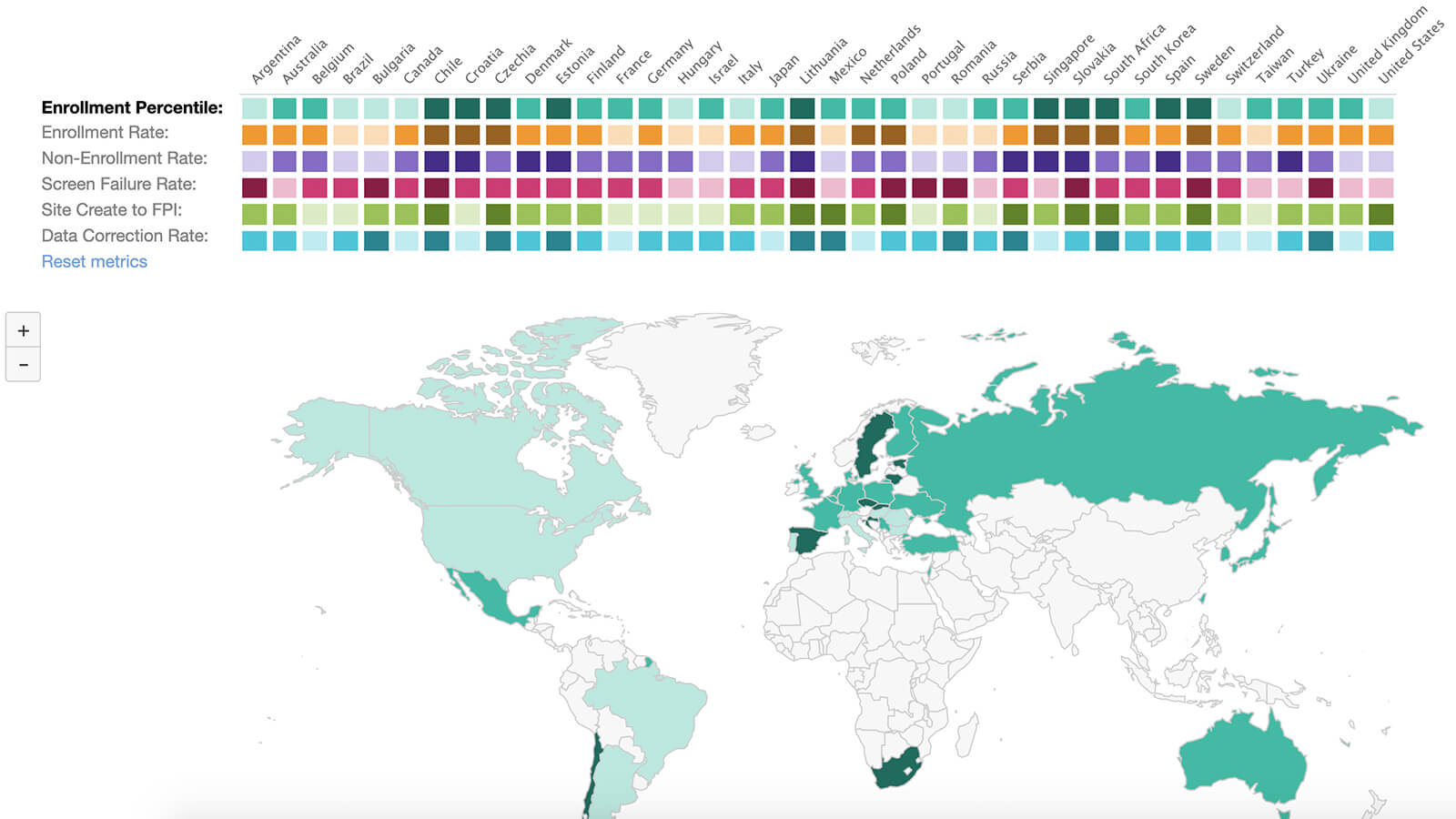
System of systems
How can model-based systems engineering help assess complex interactions?
The world’s most complex problems can no longer be solved through an isolated product or service. Instead, the most successful solutions will be those that take into account a broader context that involves interconnected constraints and interdependent reactions – known as systems of systems.
Virtual universes offer the possibility of modeling and simulating these systems of systems, opening the possibilities to consider all cyber-physical implications of complex mechatronic or intelligent embedded systems. They give the possibility to digitally evaluate the impacts of the projected models to design and produce right first time.
Learn more on System of Systems
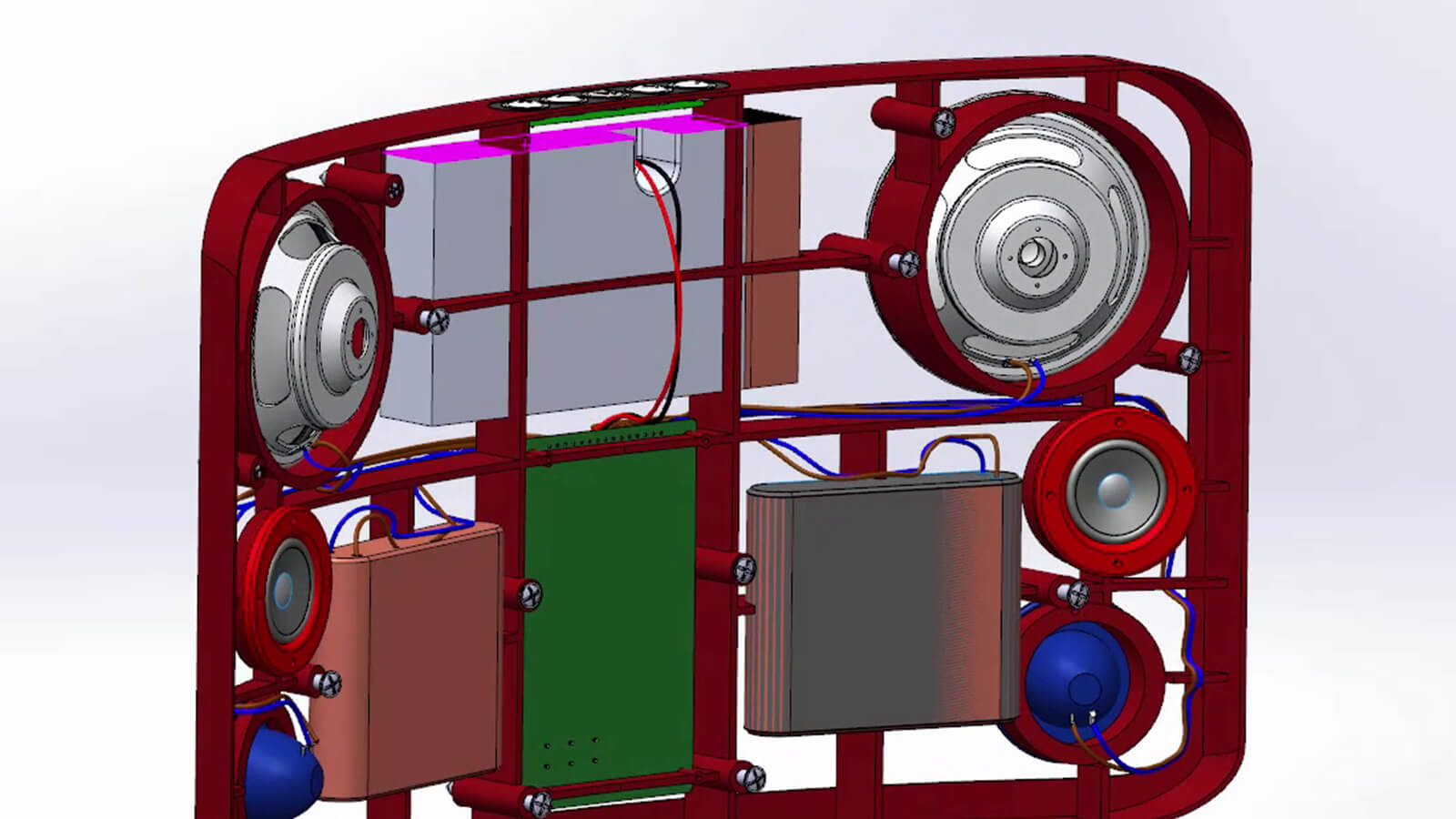
Applied Science
The power of science and imagination can address the needs of people and businesses.
XSun
XSun is challenging the aerospace with its solar-powered drone: using material science for high autonomy through photovoltaic cells and addressing optimization of systems to ensure all the remote devices.
Bouygues Construction
Reducing the urban environmental impact while covering the actual needs of citizens is Bouygues Construction's mission. New low-carbon construction models are reshaping building and city design, implementation and operation.
LALUX Assurances
Making accurate insuring products requires to change big data into a coherent set of information with the ability to manage the algorithm output thanks to natural language processing and meaningful inputs.
Arup
Establishing a common spatial data infrastructure is crucial to deeply address citizen's quality of life. The mapping of urban and suburban information improves the visibility of the infrastructure and their utility for the city.
L'OCCITANE en Provence
Thanks to an accurate virtual twin of the factory, not only the performance of the packaging industrialization is tackled but also the workers’ health and safety.
Nowy Styl
Combining at the same time the global vision of the workspace and the singular piece of furniture requires mastering both the organization and the mechanism systems. In other words, how to foster social interaction and ergonomics.
Miele
Gathering multiple experts is not enough to address complex industrial challenges. The way you represent and you provide a collective ability to act is key to understand the system of systems and to articulate expertise for a common goal.
Hyundai Doosan Infracore
Synchronizing all the operations of manufacturing means dealing with automatism and robotics but also humans. The data science of the factory is huge but need to be accessible and smooth for the workers.
Pacific Consultants
Imagining a dam and its infrastructures including all of its environmental context. Faced with geological upheavals, the useful information updates the model to put in place the appropriate protection measures.
Biomodex
Anticipate an intervention or train in conditions close to reality. The practice of surgery from a geometrically and substantially exact anatomy provides a solution to the gesture to be exercised by the practitioner.
MerConcept
To create a multihull capable of navigating at high-speed, MerConcept must combine deep industry knowledge with technology to collaborate on every aspect of the design process including a deep mastery of hydrodynamics and aerodynamics.
Electrum
Creating a new electric vehicle and producing it in a short timing can be tackled using at the same time data analytics, systems engineering and multiphysics simulation.
Living Science
Unique scientific network to invent the future.
Science Programs
Empowering leading scientific researchers
Supporting the scientific research community.
Will your virtual twin save your life one day?
From physical to virtual models of living systems, discover the science part through BioIntelligence.
Living brain for targeted epilepsy surgery
Approximately 30% of epilepsy patients are resistant to available medicine.
EPINOV, a collaborative project, aims at improving epilepsy surgery management and prognosis by modeling each patient’s brain in virtual 3D.
Simulating future scenarios for a patient
A consortium for personalized virtual twins of organs, metabolism and cancer, for better diagnosis and treatment.
See More of Our Work on Science
We Host and Participate in Scientific Events Across the Globe.
Browse our events calendar to see where we’re going next.
Looking for a scientific partner?
Leave your contact details to be in touch on science with us.
